The sample dataset contains the Color and Sizes of a t-shirt. We will Cross Join these tables to get all the available variations of that t-shirt.
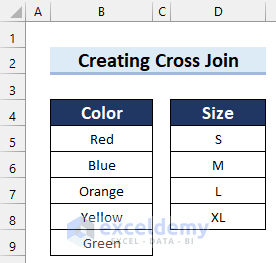
Method 1 – Use Power Query to Create a Cross Join in Excel7
Step 1 – Create a Table
- Select the data range.
- Go to the Insert tab.
- Select Table.
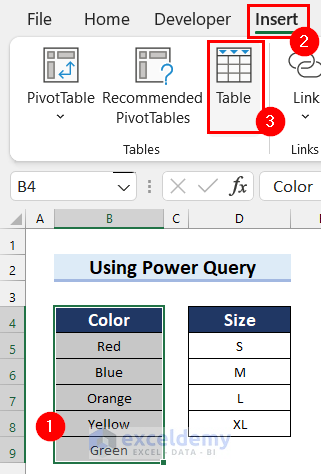
- The Create Table dialog box will appear.
- Check the My table has headers option.
- Select OK.
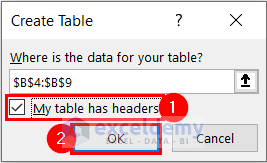
- You will get a table.
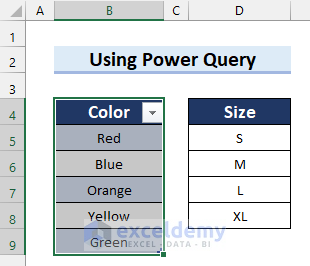
- Go to the Table Design tab.
- Write the Table Name.

- Create a table for the other data range and name it.
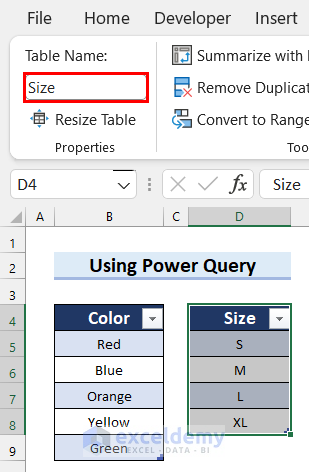
Step 2 – Import the Tables and Load as Connections
- Select a table.
- Go to the Data tab.
- Select From Table/Range.
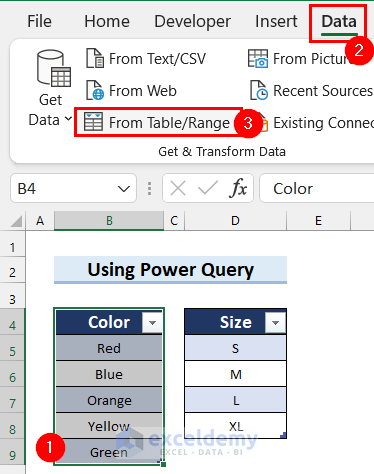
- The table is imported to Power Query.
- Select the drop-down option for Close & Load.
- Select Close & Load to.
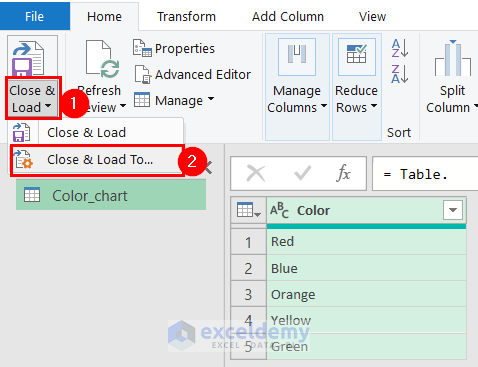
- The Import Data dialog box will appear.
- Select Only Create Connection.
- Select OK.
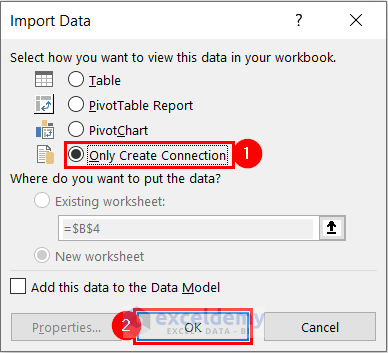
- You will see that the Queries & Connections task pane appears on the right side of the screen.
- 1 Query is added as Connection only.
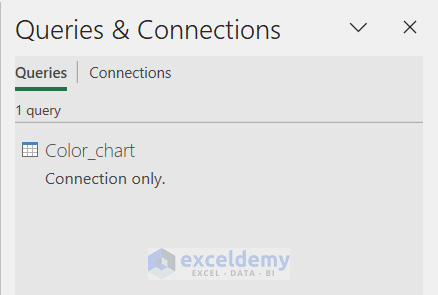
- Add the other table as a Connection only query in the same way.
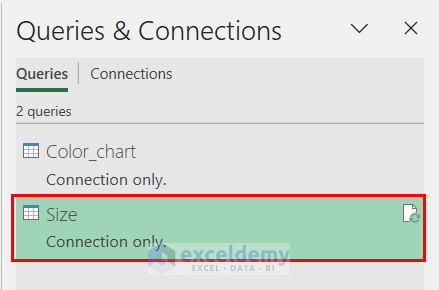
Step 3 – Create a Reference Query and a Custom Column
- Right-click on the query that you want as your first column in the cross-join.
- Select Reference.
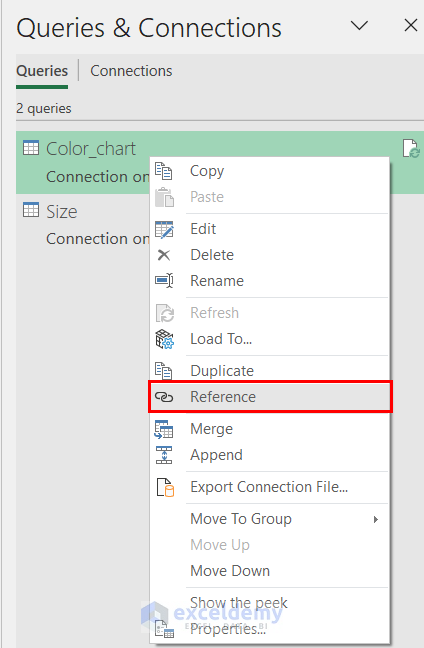
- Change the name of the query.

- Go to the Add Column tab.
- Select Custom Column.
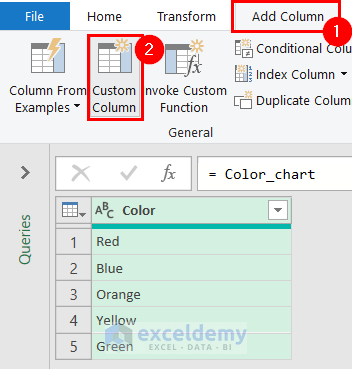
- The Custom Column dialog box will appear.
- In the Custom column formula section, write the name of the other table with which you want to create a cross-join.
- Select OK.
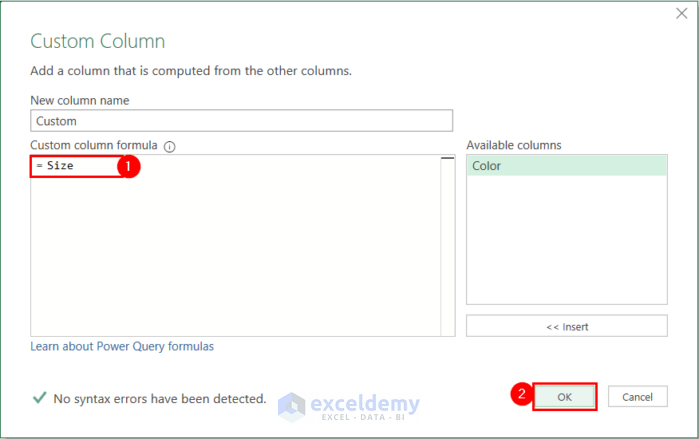
- You’ll get a new custom column in the table.
- Select the Expand button.
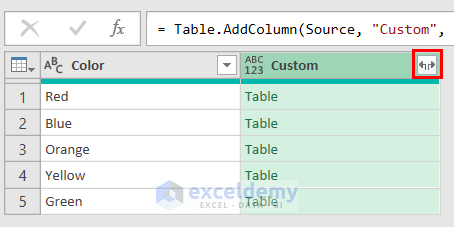
- A drop-down menu will appear.
- Select the column you want from the table.
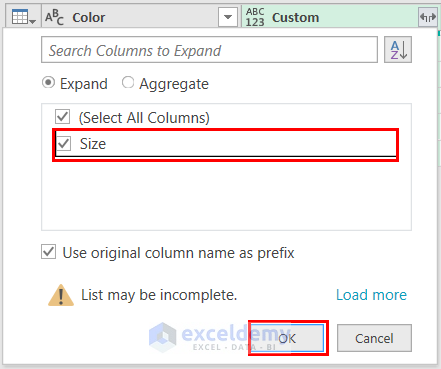
- We got the Cross Join.
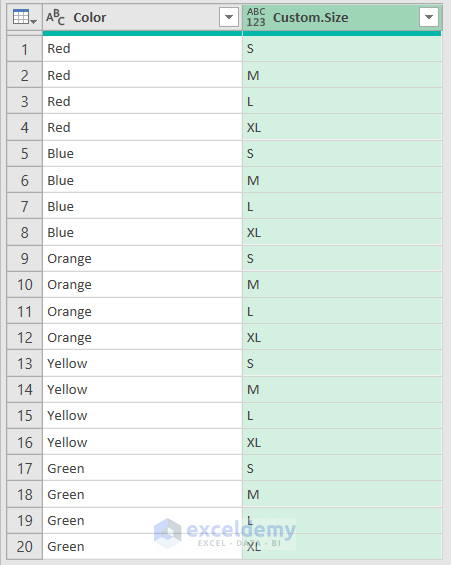
Step 4 – Load as Table
- Go to the Home tab.
- Click on the drop-down option for Close & Load.
- Select Close & Load.
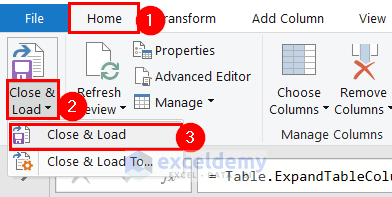
- You will see that the Cross Join is loaded in a table in a new Excel sheet.
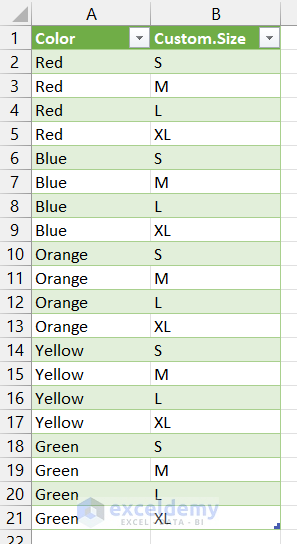
Step 5 – Add New Data
- Add new data to the table.
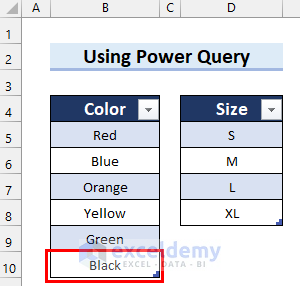
- Select the Refresh button in the Cross Join from Queries & Connections.
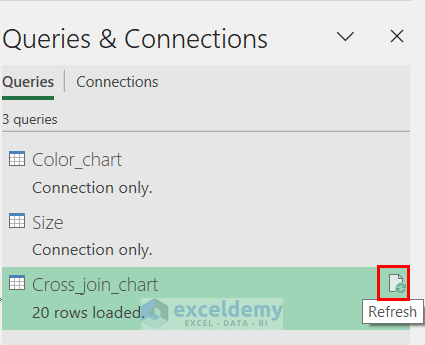
- The new data will be added to the Cross Join table.
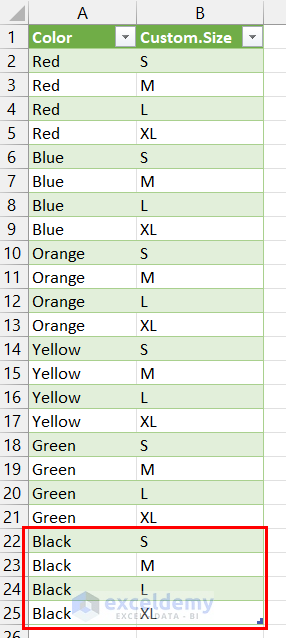
Final Output:
Here’s the final Cross Join table after formatting.
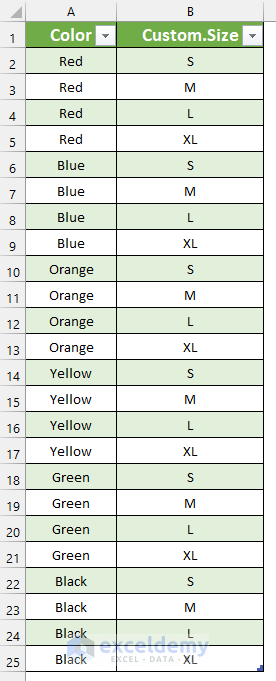
Read More: How to Combine Two Tables Using Power Query in Excel
Method 2 – Insert a Pivot Table to Create a Cross Join in Excel
Steps:
- Insert tables and name them by following the Step 1 of Method 1.
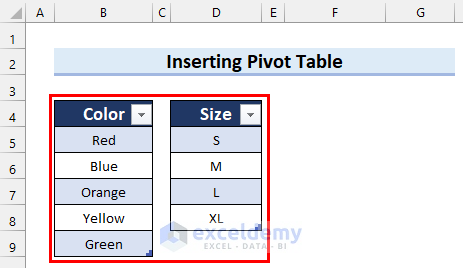
- Select the table which you want as your first column.
- Go to the Insert tab.
- Select PivotTable.
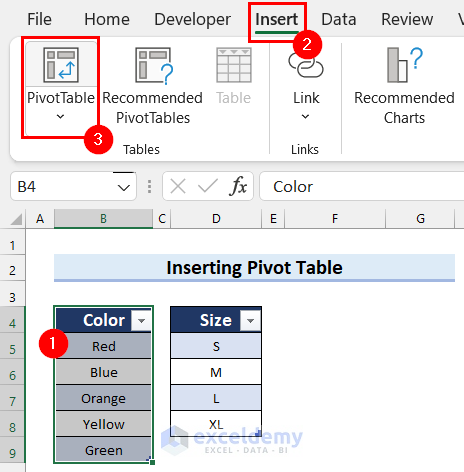
- The PivotTable from table or range dialog box will appear.
- Select Existing Worksheet.
- Select the Location where you want the table.
- Check the Add this data to the Data Model option.
- Select OK.
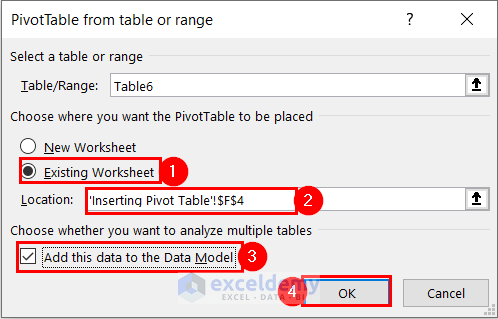
- The PivotTable Fields task pane will appear on the right side of the screen.
- Select the column from the table, and it will be added to the Rows area.
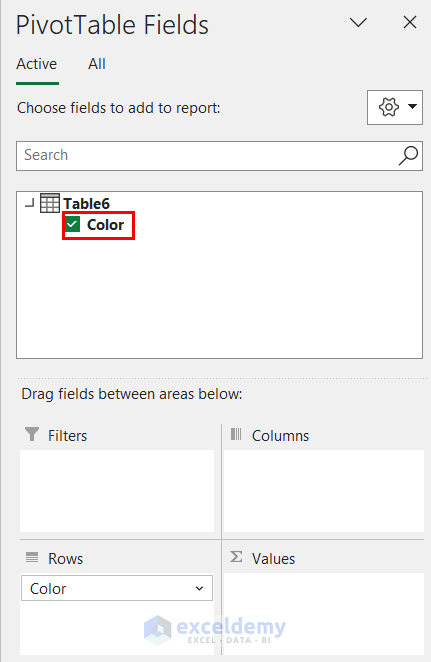
- Select the All tab.
- Select the table that you want as the second column of your Cross Join.
- Check the column name to add it to the Rows area. We have only one column in the table.
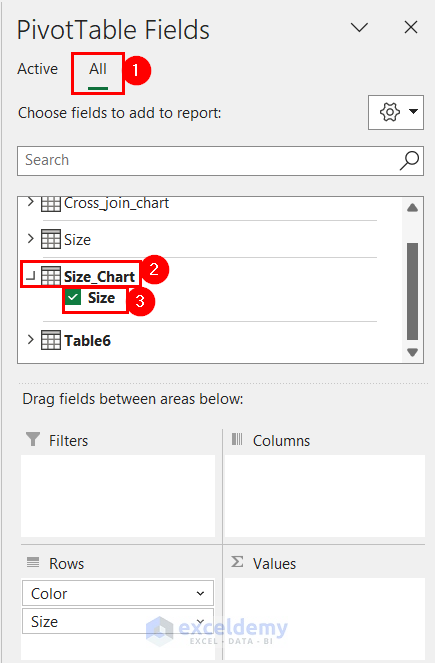
- You will get the Pivot Table.
- Select any cell of the Pivot Table.
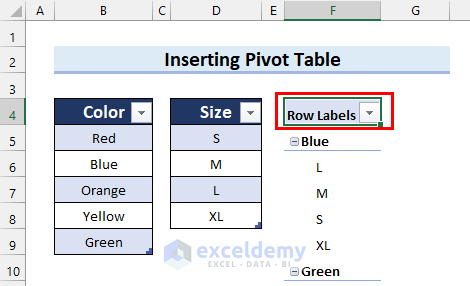
- Go to the Design tab.
- Select Report Layout.

- A drop-down menu will appear.
- Select Show in Tabular Form.
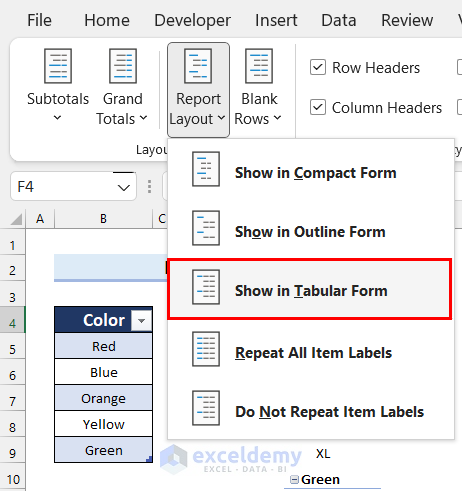
- We got the Pivot Table in tabular form.
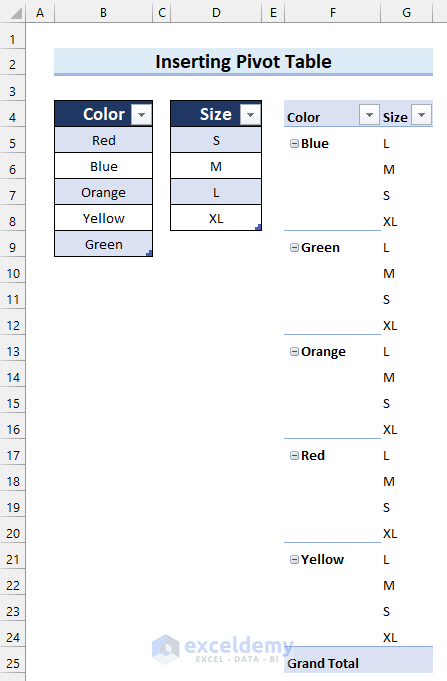
- Select Report Layout again.
- Select Repeat All Item Labels.
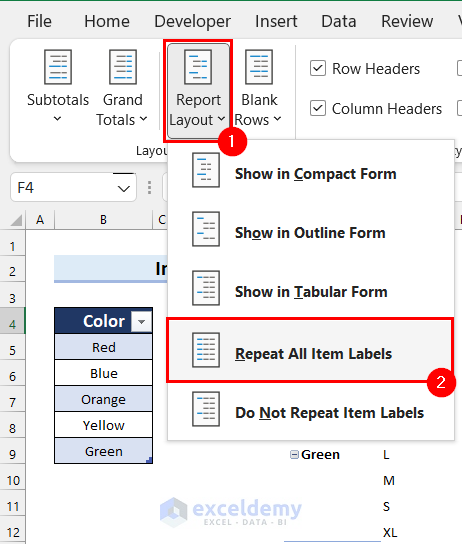
- Select Grand Totals.
- Select Off for Rows and Columns.
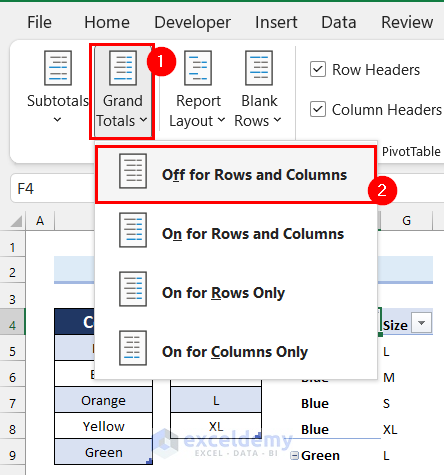
- This completes the Cross Join.
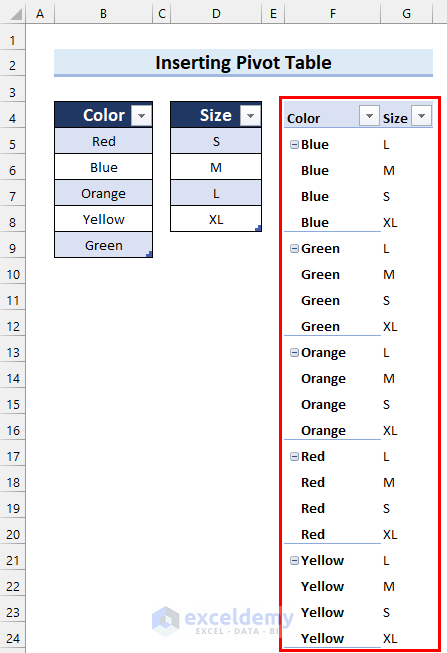
- We have added a border to the Pivot Table.
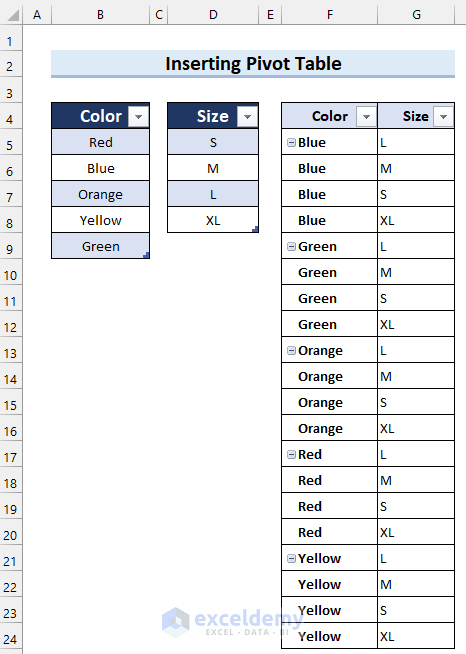
Method 3 – Use a User-Defined Function to Create a Cross Join in Excel
Steps:
- Go to the Developer tab.
- Select Visual Basic.
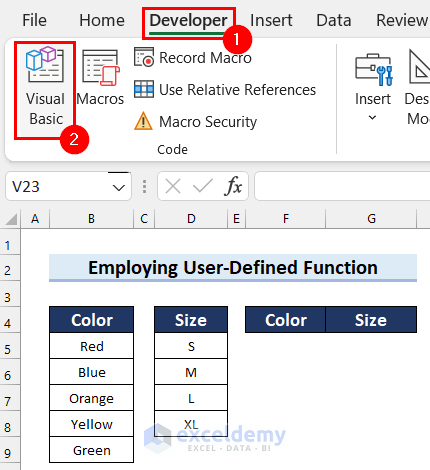
- The Visual Basic editor window will open.
- Select the Insert tab.
- Select Module.
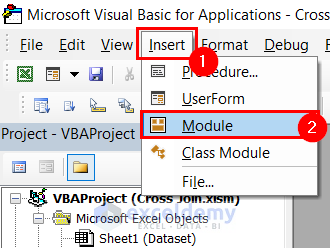
- A Module will open.
- Insert the following code in that Module.
Function cross_join(rng1 As Range, rng2 As Range) As Variant
Dim total_count As Integer
Dim output_arr As Variant
Dim row_offset As Integer
total_count = rng1.Rows.Count * rng2.Rows.Count
ReDim output_arr(0 To total_count - 1, 0 To 1)
row_offset = 0
For p = 1 To rng1.Rows.Count
For q = 1 To rng2.Rows.Count
output_arr(row_offset, 0) = rng1.Cells(p, 1).Value2
output_arr(row_offset, 1) = rng2.Cells(q, 1).Value2
row_offset = row_offset + 1
Next q
Next p
cross_join = output_arr
End Function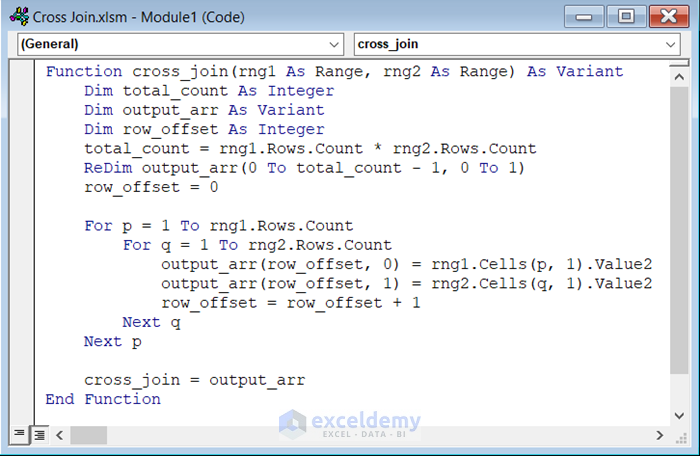
How Does the Code Work?
- We created a Function named cross_join as a Variant.
- We declared a variable named total_count as Integer, output_arr as Variant, and row_offset As Integer.
- We used Rows.Count Property to get the total_count.
- We used two For Next Loops to go through all the columns of both ranges and concatenate each value to create new ones.
- We ended the Function.
- Save the code and go back to your worksheet.
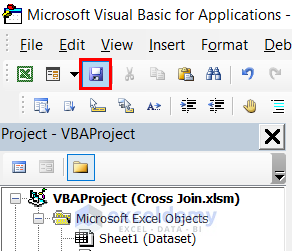
- Select the cell where you want the Cross Join. We selected cell F5.
- In cell F5, insert the following formula.
=cross_join(B5:B9,D5:D8)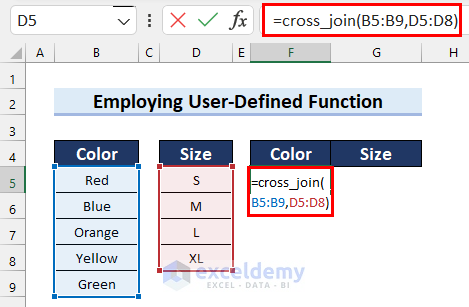
- Press Enter and you will get the Cross Join.
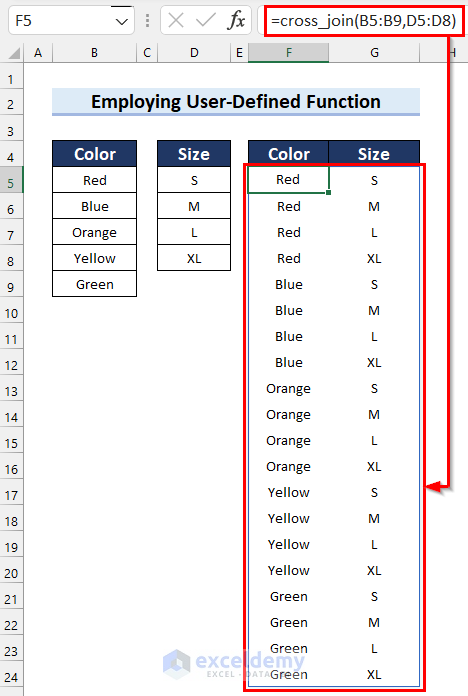
- We have added a border.
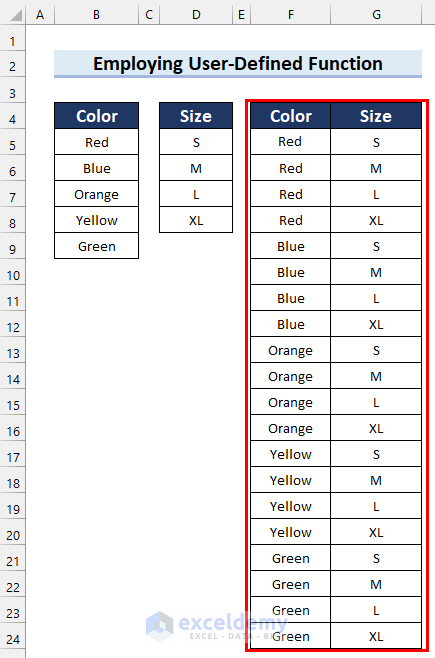
Things to Remember
If you are working with VBA, you must save the Excel file as Excel Macro-Enabled Workbook.
Practice Section
We have provided a practice sheet for you to test these methods.
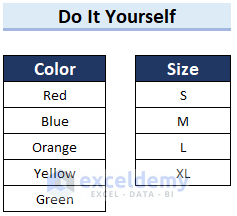
Download the Practice Workbook
Related Articles
- How to Perform Left Join in Excel
- How to Perform Left Outer Join in Excel
- How to Inner Join in Excel
- How to Perform Outer Join in Excel
- How to Create Full Outer Join in Excel
<< Go Back to Power Query Excel | Learn Excel
Get FREE Advanced Excel Exercises with Solutions!


Wonderfully Explained, was very helpful !!!!!
Hello Rahul,
You are most welcome.
Regards
ExcelDemy
Or you can do it in a formula. It works better if you convert your original columns (Colors and Sizes) to Excel tables. But the below also works with Named Ranges or original ranges (e.g., B5:B9).
=LET(LenX, ROWS(Colors),
LenY, ROWS(Sizes),
Seq, SEQUENCE(LenX*LenY,,0),
Array1, XLOOKUP(INT((Seq)/LenY)+1, SEQUENCE(LenX), Letters, “”),
Array2, XLOOKUP(MOD(Seq,LenY), SEQUENCE(LenY,,0), Numbers, “”),
HSTACK(Array1, Array2))
This can then be used to define a Lambda function named “CrossJoin”:
=LAMBDA(Table1,Table2,
LET(LenX,ROWS(Table1),
LenY,ROWS(Table2),
Seq,SEQUENCE(LenX*LenY,,0),
Array1,XLOOKUP(INT((Seq)/LenY)+1,SEQUENCE(LenX),Table1,””),
Array2,XLOOKUP(MOD(Seq,LenY),SEQUENCE(LenY,,0),Table2,””),
HSTACK(Array1, Array2)))
Now you can simply call:
=CrossJoin(Colors, Sizes)
Hello Robert Thompson,
Thank you for sharing this useful approach! The formula-based method is indeed a powerful alternative to Power Query and VBA.
Using LET and LAMBDA makes it dynamic and reusable, especially with named ranges or tables. This approach is great for those who prefer formula-based solutions and want to avoid VBA or external tools.
Your explanation is clear, and the CrossJoin LAMBDA function adds even more flexibility. It’s a fantastic addition to the methods mentioned in the article. Thanks for contributing this valuable insight!
Regards
ExcelDemy